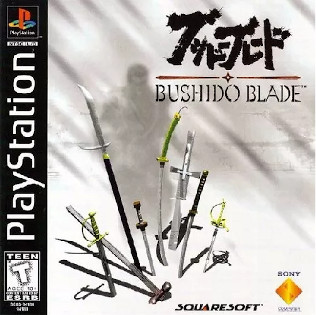
Bushido Blade is a 3D fighting video game developed by Lightweight and published by Square and Sony Computer Entertainment for the PlayStation. The game features one-on-one armed combat. Its name refers to the Japanese warrior code of honor bushidō.

Ace Combat 2 is a 1997 combat flight simulation video game developed and published by Namco for the PlayStation. It is the sequel to Air Combat and the second in the Ace Combat franchise. The player controls one of 24 different fighter jets through 21 different missions with certain objectives to fulfill, such as protecting a base from enemy fire, intercepting a squadron of enemies, or taking down an aircraft carrier.

Air Combat is a 1995 combat flight simulation video game developed and published by Namco for the PlayStation. Players control an aircraft and are tasked with completing a series of missions, with objectives ranging from destroying formations of enemies to protecting a specific target from enemy fire. Missions award money that is used to purchase new fighter aircraft, each with its own unique weapons and strengths.

Mega Man X3, known as Rockman X3 (ロックマンX3) in Japan, is a 1995 action-platform game released by Capcom for the Super Nintendo Entertainment System (SNES). The game was originally released in Japan on December 1, 1995, and later in North American and PAL regions in 1996. It is the third game in the Mega Man X series and the last to appear on the SNES. Mega Man X3 takes place in a fictional future in which the world is populated by humans and intelligent robots called "Reploids". Like their human creators, some Reploids involve themselves in destructive crime and are labelled as "Mavericks". After twice defeating the Maverick leader Sigma, the heroes X and Zero must battle a Reploid scientist named Dr. Doppler and his utopia of Maverick followers.
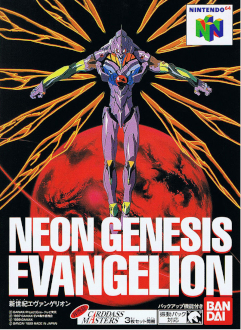
Neon Genesis Evangelion, also referred to as Neon Genesis Evangelion 64, is a 1999 fighting game released for the Nintendo 64 in Japan by Bandai. It is based on the Gainax anime series Neon Genesis Evangelion and the 1997 film that serves as its conclusion, The End of Evangelion. Players control a mech named Evangelion Unit 01 to destroy a race of aliens known as the Angels before they eradicate the rest of the human race. The game is known for its alterations to the source material in order to make its dystopian and unsettling atmosphere suitable for an action game, and features unique endings and plotlines not present in other Evangelion media.
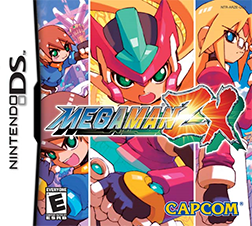
Mega Man ZX is a 2006 action-platform game developed by Inti Creates and published by Capcom for the Nintendo DS. It was released on July 6, 2006 in Japan, September 12, 2006 in North America, June 20, 2007 in Australia, and June 22, 2007 in Europe.

Gradius Gaiden is a 1997 horizontal-scrolling shooter video game developed and published for the PlayStation by Konami. Players control one of four different starships in their mission to eradicate the Bacteria army from destroying the planet Gradius. Gameplay involves shooting down enemies, avoiding their projectiles, and collecting power capsules to unlock access to new weapons. It is the fourth mainline entry in the company's Gradius franchise, and the second to be produced specifically for a home console.
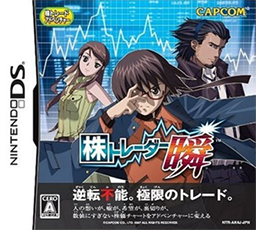
Kabu Trader Shun is an adventure video game for the Nintendo DS. The game was developed by Inti Creates, published by Capcom, and released exclusively in Japan on June 7, 2007. The plot follows the young protagonist Shun Aiba entering the lucrative world of stock trading in order to follow in the footsteps of his father, a famous trader himself who disappeared five years earlier. The goal of the game is increase Shun's wealth with gameplay consisting of daily management of personal stocks, traveling around various points of interest within a city to advance the story, and engaging in one-on-one battles with rival stock traders.

Soldier Blade is a 1992 vertically scrolling shooter developed and published by Hudson Soft for the TurboGrafx-16. Controlling the titular starship, the player is tasked with completing each of the game's seven stages in order to wipe out the Zeograd Army, an alien race bent on conquering Earth. The game is the fourth entry in the Star Soldier series and shares many similarities with its predecessor Super Star Soldier, with Soldier Blade having a heavy emphasis on speed.

Xevious: Fardraut Saga is a 1988 vertically scrolling shooter video game published by Namco for the MSX2 in Japan. An updated PC Engine version was released two years later. The fifth entry in the Xevious franchise, the player controls a spaceship in its mission to vanquish the Xevious forces before its supercomputer leader GAMP wipes out the entirety of mankind. The player uses two weapons, an air zapper to destroy air-based enemies, and a blaster bomb to destroy ground-based enemies.
Inti Creates Co., Ltd. is a Japanese video game development company. Formed by ex-Capcom staff in May 1996, they are best known for developing games in the Mega Man series, namely the Mega Man Zero and Mega Man ZX series, and their flagship Azure Striker Gunvolt and Gal Gun franchises.
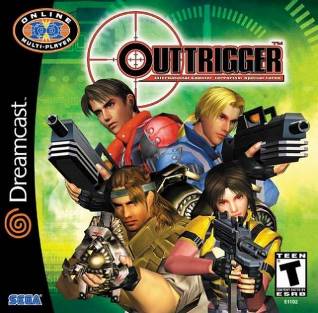
Outtrigger is a first/third-person shooter video game developed by Sega for the Sega NAOMI arcade cabinet and the Dreamcast. The game was originally released in 1999 for the arcades and was later ported over to the Dreamcast in 2001. The player character of Outtrigger is a member of an anti-terrorist group, and can be chosen between default characters with different specialties or a custom character, and can utilize a number of power-ups. Reception to Outtrigger was generally positive, praising the gameplay and mechanics, though criticizing the removal of online play in the European version of the game.

Mega Man Zero Collection is a compilation of all four Mega Man Zero video games, which were originally released for the Game Boy Advance between 2002 and 2005. It was developed by Inti Creates and published by Capcom, and was made available worldwide in June 2010 for the Nintendo DS. The collection contains new features such as a beginner-friendly "Easy Scenario" that grants power-up items and abilities from the beginning of each game, as well as unlockable character art and the ability to display artwork on the Nintendo DS's bottom screen as the game is played. A similar compilation, Mega Man Zero/ZX Legacy Collection, was released in 2020.
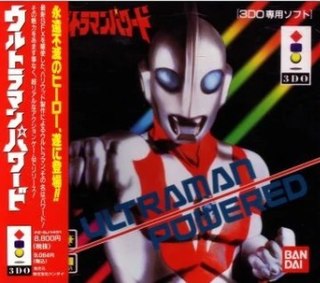
Ultraman Powered is a fighting game developed by Tose and published by Bandai for the 3DO Interactive Multiplayer. The player takes on the role of the extraterrestrial superhero Ultraman Powered, tasked with protecting the Earth from destructive aliens and monsters. Gameplay primarily consists of one-on-one battles where the player must deplete an adversary's health meter using both basic and special fighting techniques. The game also contains 3D rail shooter sections and a two-player versus option.

Bloodstained: Curse of the Moon is a 2018 platform game developed and published by Inti Creates. It is a companion title to developer ArtPlay's 2019 game Bloodstained: Ritual of the Night and was conceived to fulfill the promise for a retro-style accompaniment to Ritual of the Night after its Kickstarter campaign exceeded crowdfunding goals. Curse of the Moon follows Zangetsu, a cursed swordsman hunting down demons for revenge, as well as three other playable characters named Miriam, Alfred and Gebel. It features an 8-bit aesthetic and gameplay style similar to Castlevania games on the Nintendo Entertainment System (NES), particularly Castlevania III: Dracula's Curse (1989).
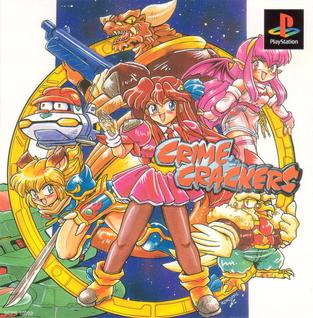
Crime Crackers is a first-person shooter/action role-playing video game developed by Media.Vision and published by Sony Computer Entertainment for the PlayStation. Based on a science fiction manga set after an intergalactic war, the story follows of group of bounty hunters aboard the spacecraft Pink Dolphin as they take on jobs requested by the Galactic Federation police. Gameplay resembles dungeon crawlers, largely consisting of exploring complex 3D corridors, collecting items, and shooting enemies. The player is able to freely rotate between three unique characters within missions, while points earned afterwards can be used to purchase consumable items and upgraded equipment.
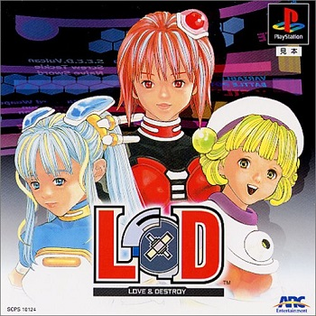
Love & Destroy is a third-person shooter video game with dating sim elements co-developed by Arc Entertainment and Inti Creates. It was released by Sony Computer Entertainment, Inc. (SCEI) for the PlayStation exclusively in Japan in 1999. Set in the near future, the plot depicts an alien invasion which nearly brings about human extinction. To save humanity, a scientist sends three remaining mechs and their robotic, female navigators back in time where they recruit the unnamed, male protagonist as a mech pilot to stamp out the invasion. Bringing out the full, offensive potential of a mech requires a positive, emotional link between the human pilot and navigator.

Ghoul Panic is a 1999 light gun shooter arcade game developed by Raizing and published by Namco. A version for the PlayStation was released in 2000. Players used lightguns to complete a series of minigames, done by firing at on-screen targets. In these minigames there is an objective that must be fulfilled before the time runs out to progress such as shooting a certain amount of enemies or protecting small, yellow cats from projectiles. It ran on the Namco System 12 arcade hardware.
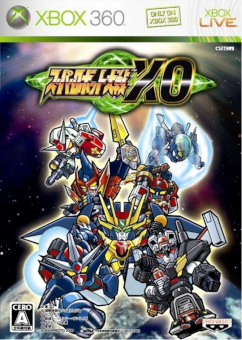
Super Robot Wars XO is a 2006 tactical role-playing video game developed and published by Banpresto for the Xbox 360 in Japan. Part of the company's Super Robot Wars series, it is an updated version of the GameCube installment Super Robot Wars GC (2004). Players control a fleet of mechas from a variety of super robot anime series, including Mobile Suit Gundam and Getter Robo, to defeat opponents on a grid-based map. XO combines tactical role-playing game mechanics with action sequences, which use stylized anime-esque cutscenes unique for each character.

Gundam: Battle Assault is a 1998 fighting video game developed by Natsume Co., Ltd. and published by Bandai for the PlayStation. Based on the Gundam franchise, it is a follow-up to Gundam: The Battle Master (1997), which was released only in Japan. The plot involves Heero Yuy, protagonist of Mobile Suit Gundam Wing and pilot of the XXXG-01W Wing Gundam, on a mission to destroy remaining enemy Mobile Suits under command of Treize Khushrenada to stop a war from starting. Its gameplay consists of one-on-one fights, with a main six-button configuration, featuring special moves and two playable modes, while players can select any available mech to battle against enemies in story mode.




















